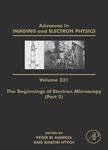版权所有:内蒙古大学图书馆 技术提供:维普资讯• 智图
内蒙古自治区呼和浩特市赛罕区大学西街235号 邮编: 010021

作者机构:Univ Toronto Multimedia Lab Edward S Rogers Sr Dept ECE Toronto ON M5S 3G4 Canada
出 版 物:《ADVANCES IN IMAGING AND ELECTRON PHYSICS, VOL 140》 (Advances Imaging Electron Phys.)
年 卷 期:2006年第140卷
页 面:187-264页
核心收录:
主 题:Product development
摘 要:The purpose of this chapter is to present the state-of-the-art in color image filtering and enhancement techniques, and to discuss in a systematic and comprehensive way the most important developments in the field of color image filtering. The perception of color is of paramount importance since human observers routinely use color information to sense the environment, recognize semantic objects of interest, and convey information about the environment. Color image processing is concerned with the manipulation of digital color images on electronic devices, such as computers and digital cameras, through the utilization of digital signal processing methods. Digital image processing, a well-established research discipline with many important practical applications, focuses on the conversion of a continuous image field into an equivalent digital form. The synthesis of images from the signals arising from various sensor systems is accomplished by a digital process directed to transforming the signal into a form allowing visual or machine perception. The requirements for an ideal conversion system are usually expressed in terms of certain technical properties, such as the resolution of the imaging systems, photometric accuracy, quantization levels, intensity of intrinsic noise, and many others. In this chapter Section II reviews briefly the fundamentals of the trichromatic theory of color representation emphasizing the connections between colorimetric properties and vectorial representation in a three-dimensional (3D) color space. This part also includes Section III in which synthetic color image noise models are reviewed. The purpose is to provide insights into the fundamentals of color image formation and a basic understanding of the objectives behind the development of the various color image filtering schemes. The analysis of the image noise in digital image acquisition systems often focuses on random noise sources, such as those associated with quantum signal detectio